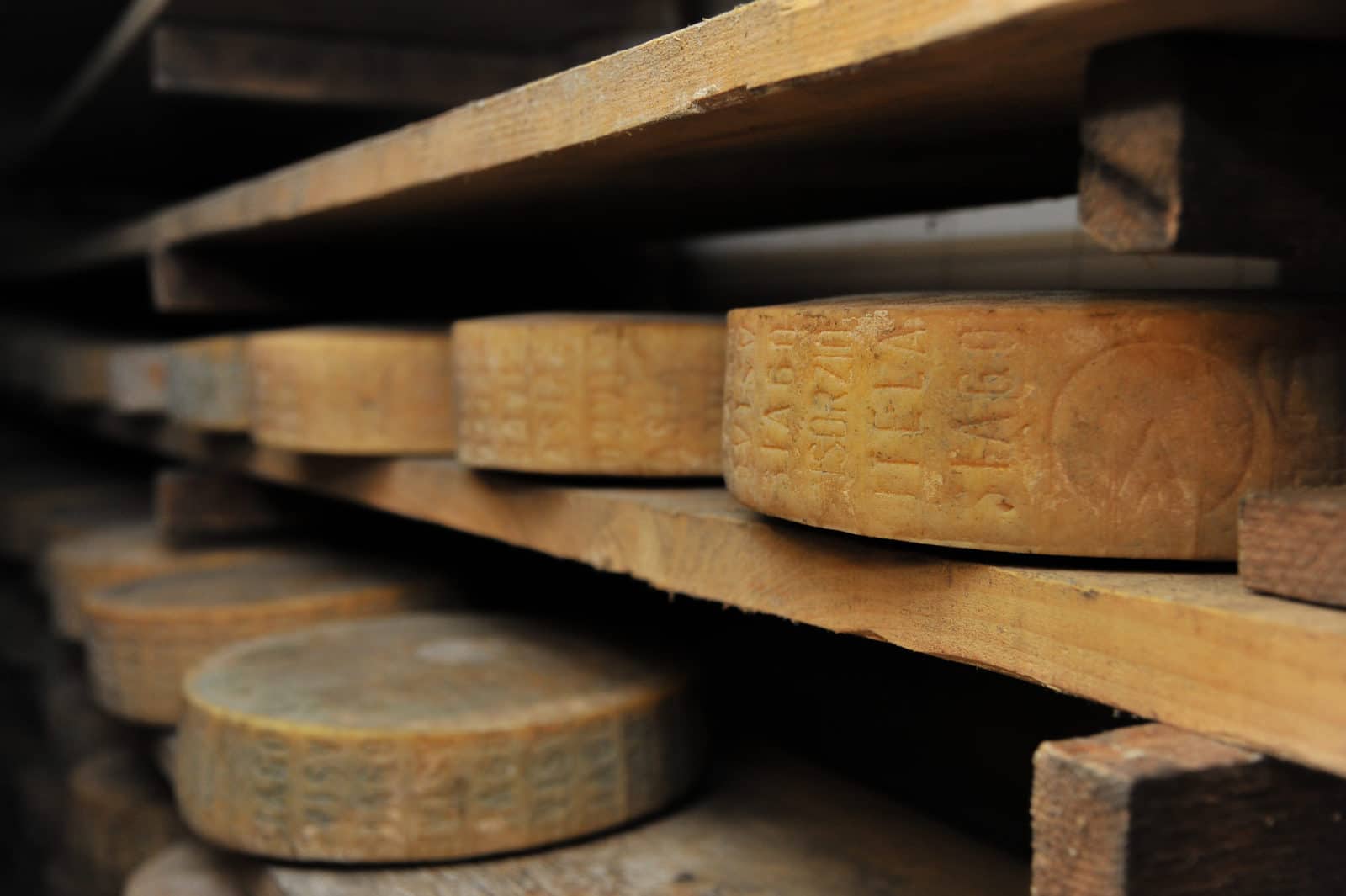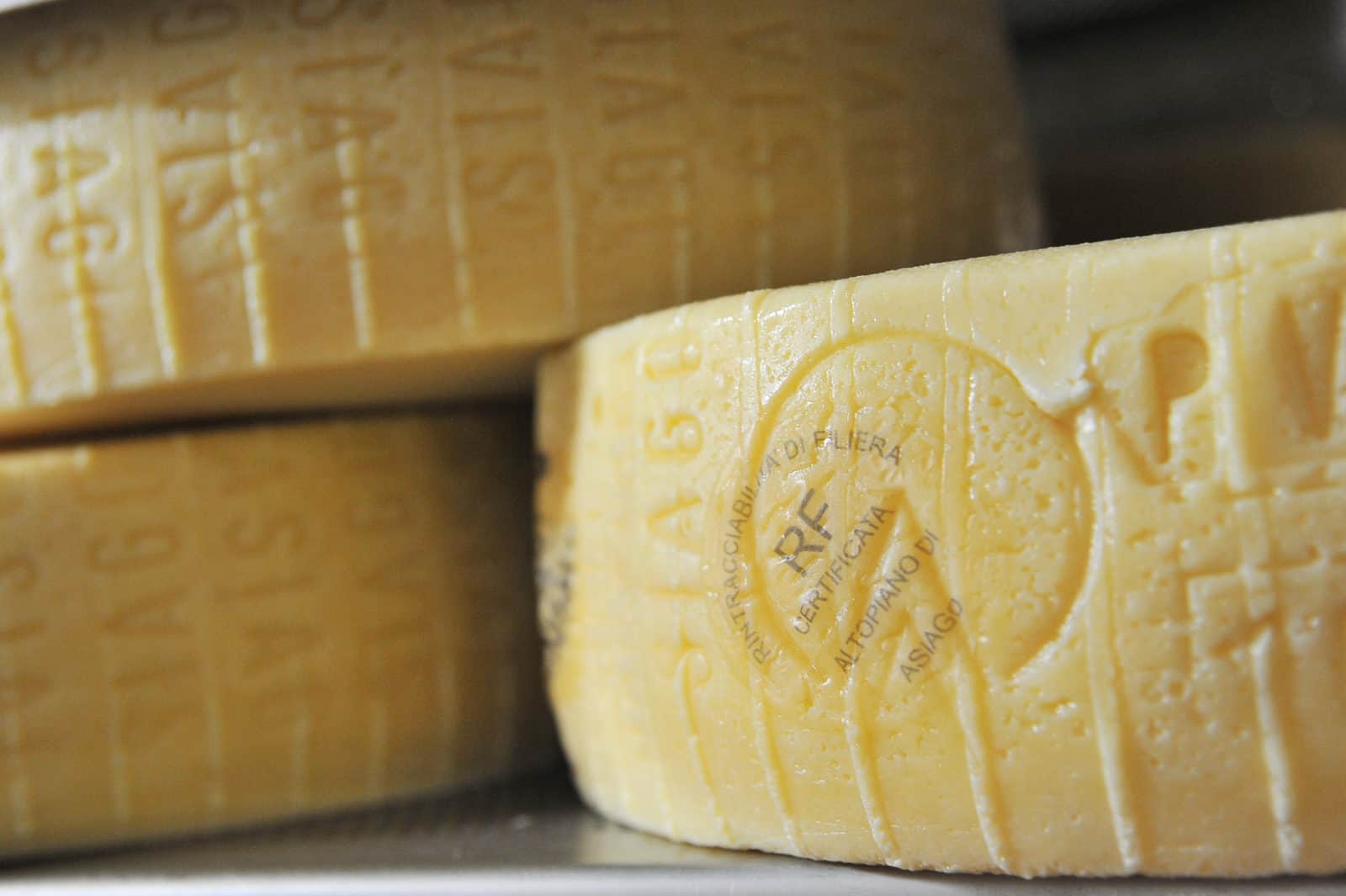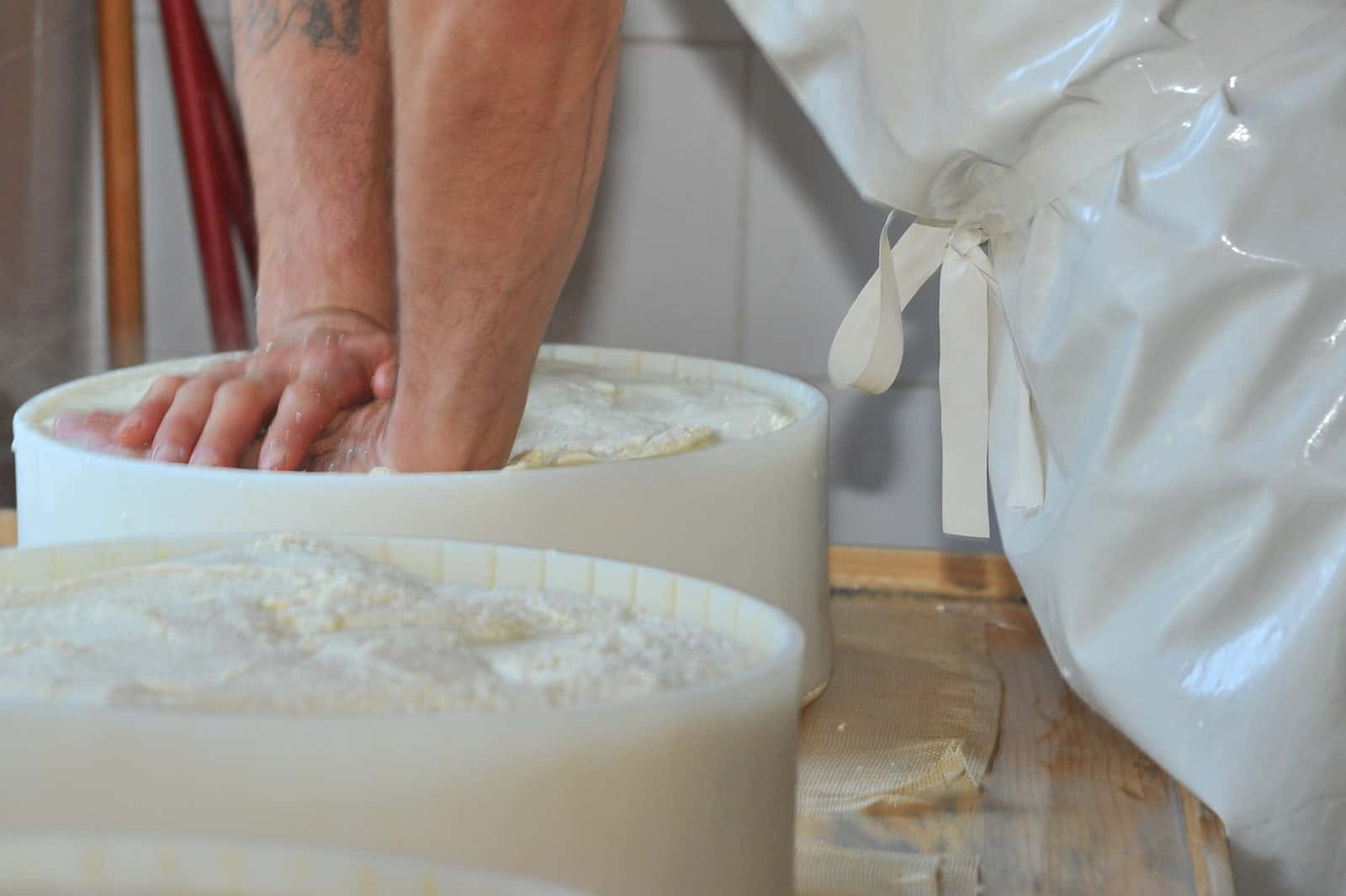
We’d always thought we knew a lot about Asiago PDO. However, a recent trip to northern Italy opened our minds (and taste buds!) to a deeper appreciation for this beloved cheese. Here are a few facts we learned:
There’s a real place called Asiago (it’s not just in our dreams!)
Asiago is the name of both the Italian PDO cheese and a minor township in the Asiago Plateau region. Officially, Asiago PDO is made with milk from cows that graze in the provinces of Trento, Vicenzo, and parts of the provinces of Padua and Treviso. However, there’s also a special designation called “Product of the Mountain” for Asiago cheeses produced on the Asiago Plateau.

There are two versions of Asiago PDO: fresh and aged.
There are two versions of Asiago PDO. “Fresco” refers to the buttery and tangy fresh Asiago, aged for a mere 30-50 days. “Stagionato” is aged Asiago, and is aged for varying amounts of time. The length of time affects the taste. Asiago Mezzano PDO (aged 4-6 months) is yeasty and sweet, while Asiago Vecchio PDO (aged 10 or more months) is nutty and fragrant. The oldest of the bunch, Asiago Stravecchio PDO (aged 15 or more months) is spicy and intense.
Fresh Asiago is made from whole milk and pressed.
Asiago Fresco PDO is made from three ingredients: whole pasteurized cow’s milk, salt, and rennet. This means it melts like a dream on grilled cheese sandwiches, pizzas, and scrambled eggs.
Asiago is good for digestion.
The presence of live lactic cultures, similar to those found in yogurt, means that fresh Asiago helps support digestive health.
Fresh Asiago tastes buttery and tangy.
Serve it on a board with orange blossom or wildflower honey and spicy jams. Pair it with sparkling whites like Franciacorta and Prosecco, and fruity, herbaceous Sauvignon Blanc.
Aged Asiago is made with skim milk and is full of protein.
Asiago Stagionato is made from three ingredients: partially skimmed cow’s milk, salt, and rennet. It’s perfect for baking; make it into crisps, or to top scones and biscuits. One and a half ounces of this cheese provides a whopping 25% of your daily protein needs.
Asiago Mezzano PDO (aged four to six months) is fragrant, yeasty, and sweet.
Plate it with sage honey and berry jams, and pair it with ultra dry Chianti reminiscent of tart cherries.
Asiago Vecchio PDO (aged 10+ months) is toasty and nutty.
Present it on a board with sourwood honey and fig jam, and pair it with a ripe, raisin-y Amarone della Valpolicella.

Asiago Stravecchio PDO (aged 15+ months) is spicy with a touch of salted caramel.
This complex beauty is complemented by chestnut honey and fruit pastes on a board. It pairs well with a lightly sweet Muscato with a slight fizz and flavors of nectarine, peach, and orange.
Note on availability: Asiago made in the U.S. is often easier to find than Asiago PDO from Italy, however an E.U. funded program called Uncommon Flavors of Europe is working to change that by promoting Italian Asiago, along with Speck Alto Adige and Pecorino Romano in the United States.
Photographed by Manuela Tessaro





